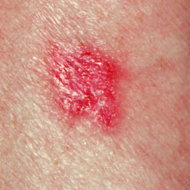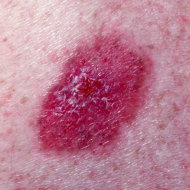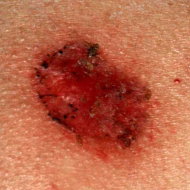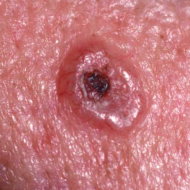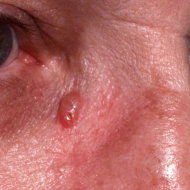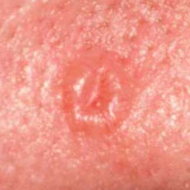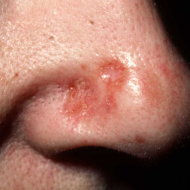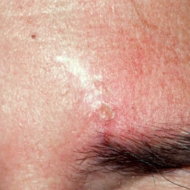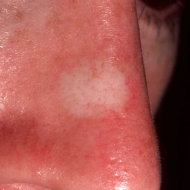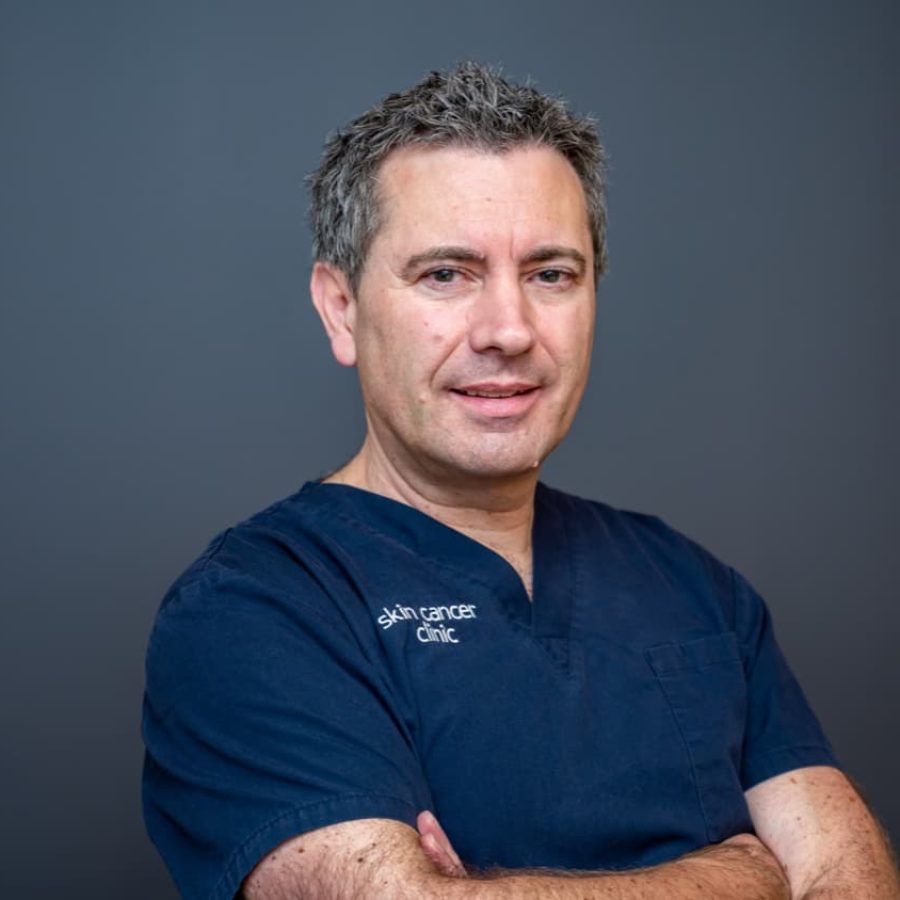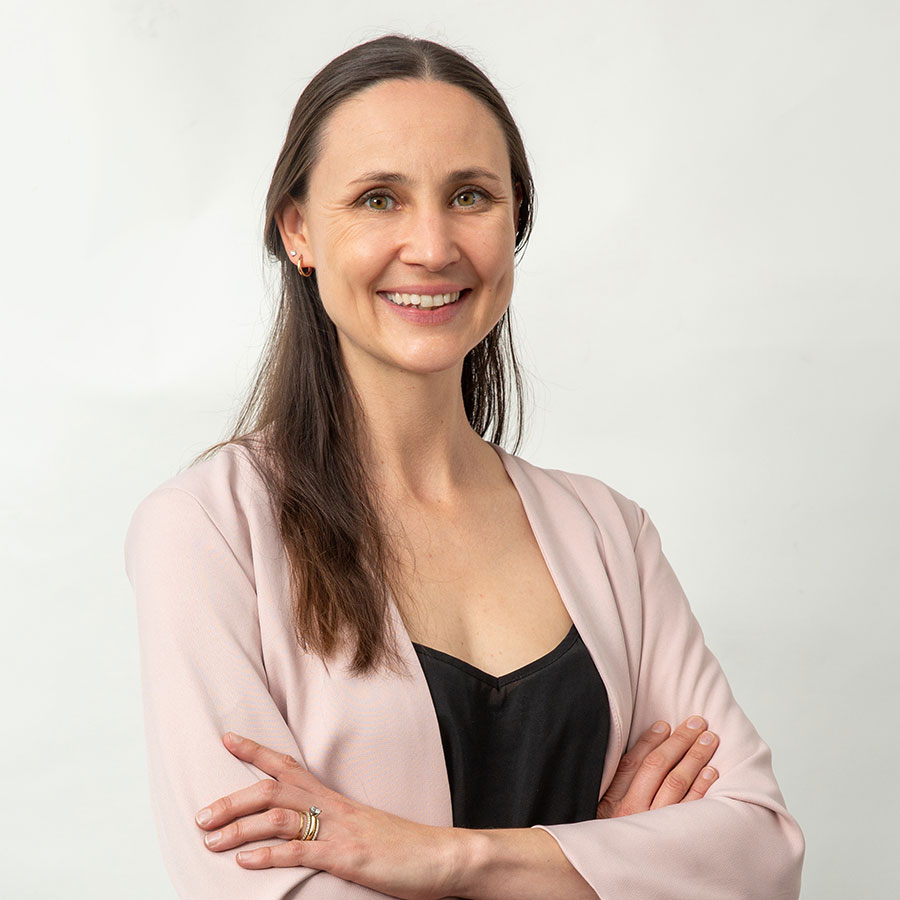Basal Cell Carcinoma
Basal cell carcinoma (BCC) is the most common type of skin cancer and the least dangerous. It is locally invasive, slowly eating away at the surrounding tissue, and may eventually become an ulcerated, bleeding sore.
The predominant factor causing BCC is UV radiation from the sun. Other factors include immune suppression (e.g. after organ transplantation), chemical exposure (e.g. arsenic), and radiation therapy.
There are three main types of BCC - superficial, nodular, and morphoeic. Each has a distinct clinical presentation as discussed below:
Superficial BCC
This is a common subtype of BCC. Superficial BCC often occurs on the trunk or limbs and often in younger people compared to the other subtypes of BCC.
Superficial BCC presents as a bright pink, shiny, usually well-defined patch on the skin. The degree of redness may fluctuate greatly, and it may be more obvious when the skin is warm or the spot is rubbed, e.g. after a shower. Superficial BCC may sometimes be pigmented, as may all BCCs.
It is not usually symptomatic, although it may sometimes be slightly itchy. Though these lesions are readily eroded by minor trauma, they seldom bleed.
Superficial BCC progressively enlarges over months to years. With time, areas of nodular or even morphoeic growth pattern may supervene within the original superficial BCC.
Nodular BCC
Nodular BCCs are more often found on the head and neck, and in patients who are often older than those with a superficial BCC.
Nodular BCCs typically present as a shiny, pearly, raised spot or nodule. Recurrent ulceration is frequent and this may lead to a depressed area in the central part of the lesion with a more raised, rolled edge.
Sensory symptoms are uncommon, like with superficial BCC. Unlike superficial BCCs though, nodular lesions will repeatedly ulcerate and bleed.
Aggressive morphoeic change frequently supervenes in longstanding nodular BCCs.
Morphoeic BCC
Morphoeic or sclerosing BCC is a much less common subtype of BCC. It is often found on the head and neck, much like nodular BCC. Morphoeic BCCs are usually of long standing and tend to be deeply invasive.
Morphoeic BCC has the appearance of a pale scar. They can be difficult to detect and sometimes the patient is unaware of it, or may have simply thought it was an old scar that hadn’t healed very well. They are quite firm to touch. Morphoeic BCCs constitute an aggressive growth pattern and are often associated with significant tissue destruction. Their finger-like processes often extend much more widely and deeply than it seems on inspection.
Morphoeic BCCs are frequently asymptomatic, and may remain undetected for many years before being treated.

